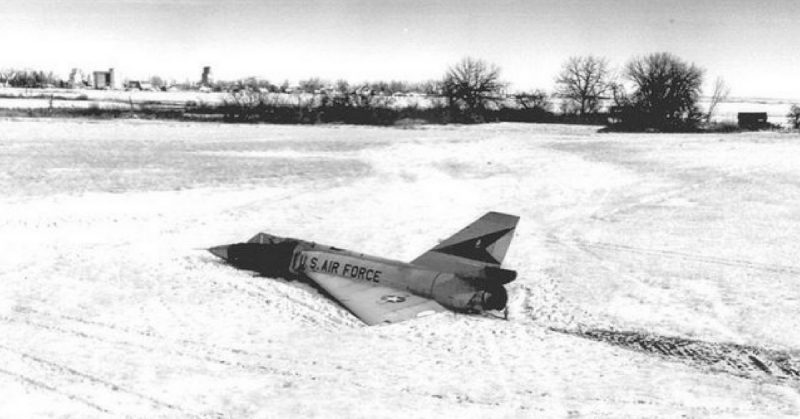The world of military aviation is full of strange stories, freak accidents, amazing near-misses, and unlikely happenings.
But few tales are stranger than the story of the “Cornfield Bomber” in which a US Air Force Convair F-106 Delta Dart interceptor landed itself completely unmanned after the pilot ejected at approximately 15,000 feet.
The incident took place on a cold February morning in 1970 in Montana and is still well-remembered in aviation circles today.
The name given to the incident is a bit of a misnomer, though. The F-106 that landed itself on February 2, 1970, wasn’t a bomber. Rather, the Convair F-106 Delta Dart was the US Air Force’s primary interceptor aircraft from the ‘60s until the ‘80s, when it was retired. Also, the field in which the F-106 landed wasn’t a cornfield but a wheatfield.
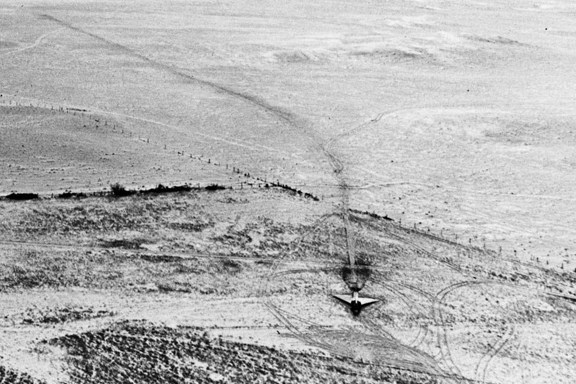
For whatever reason, though, the name “Cornfield bomber” was given to the incident – perhaps because it has a better ring to it than “Wheatfield fighter.”
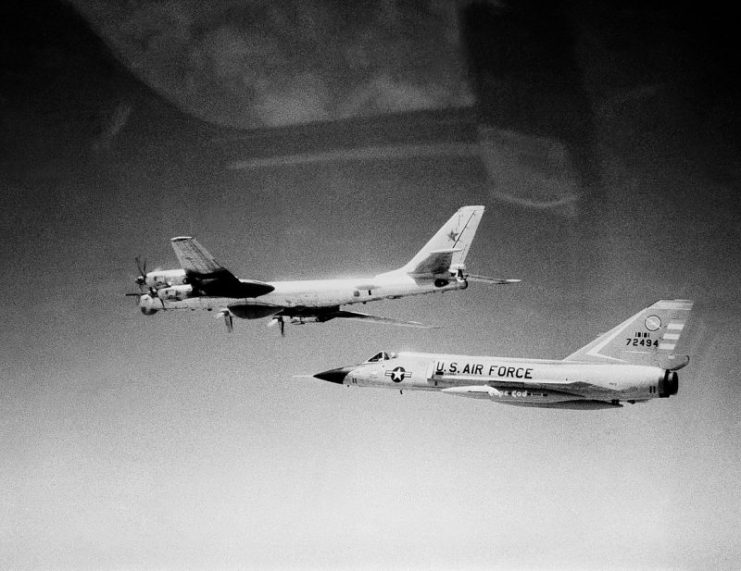
While many military personnel and civilians alike know the F-106 with the tail number 58-0787 as the “Cornfield Bomber,” to the airmen of the 49th Fighter-Interceptor Squadron (to which the interceptor was assigned after the incident) it was known as the Gray Ghost – a nickname also derived from the interceptor’s uncanny ability to land itself.
The man who was in the pilot’s seat of the Delta Dart F-106 58-0787 on February 2, 1970, was 1st Lieutenant Gary Faust of the USAF 71st Fighter Interceptor Squadron. He and two other pilots, IP Major James Lowe and IP Captain Tom Curtis, were in the Montana skies on a slightly unorthodox training session.
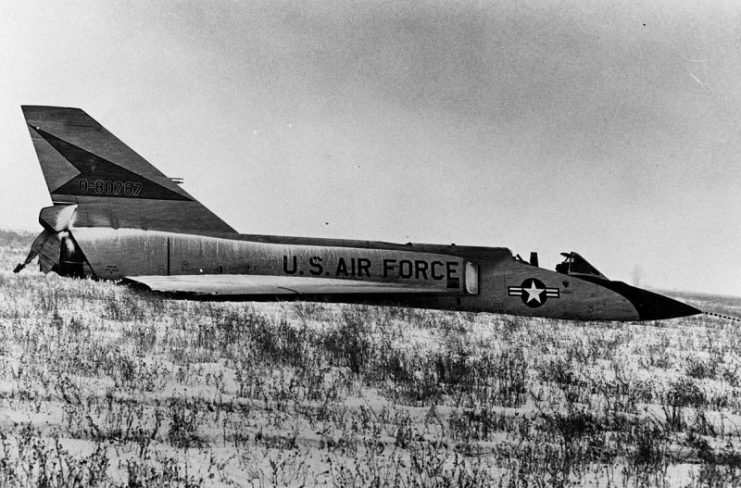
It had originally been planned as four planes on an Air Combat Maneuver (ACM) training sortie, but the fourth aircraft developed a malfunction before even taking off, so only three interceptors took to the skies that day.
Curtis took on the role of aggressor, and at around 38,000 feet he ripped by Lowe and Faust at Mach 1.9. Faust, the least experienced of the trio, was piloting F-106 58-0787 and tried to stay with Curtis, but as they got into a vertical rolling scissors maneuver, Curtis gave Faust a high-G rudder reversal.
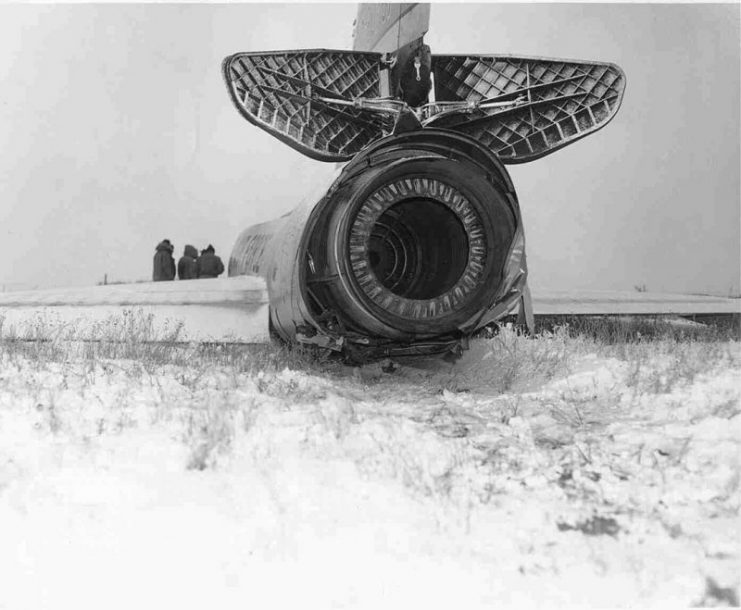
The less-experienced pilot went into a post-stall gyration, and then the engine stalled and the F-106 went into a flat spin. Despite this being regarded as pretty much unrecoverable, Major Lowe tried to coach Faust through a spin recovery procedure.
Despite Faust actuating the takeoff trim button, deploying the drag chute, and trying a host of other actions aimed at recovering from the spin, nothing worked.
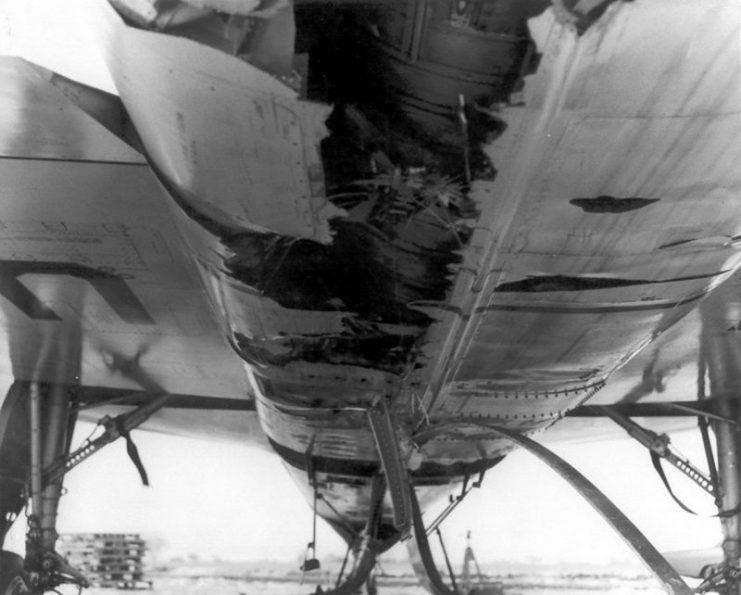
At around 15,000 feet, Faust realized that there would be no recovery. He fired his ejection seat, blasting himself out of the aircraft into the frigid air – and then something very unexpected happened.
The F-106, in the attempt to recover from the flat spin, had been trimmed for takeoff settings – similar to landing settings – and this, combined with the force of the ejector seat blast pushing the interceptor’s nose downwards as well as the repositioning of the aircraft’s center of gravity, got the aircraft miraculously to recover from the spin.
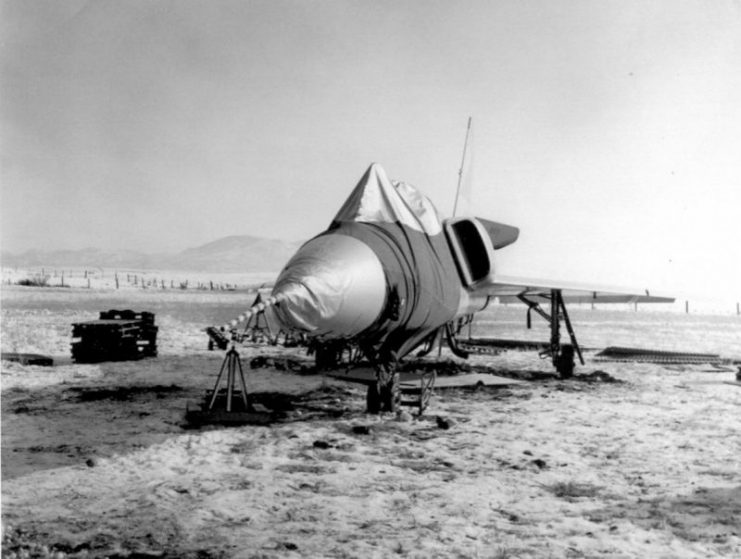
The F-106 began gliding gently earthwards, at which point Lowe radioed Curtis, who was also drifting toward the earth in his ‘chute, and told him jokingly that he’d “better get back in it!”
The now-unmanned F-106 glided down to an open, snow-covered farmer’s field where it managed to belly land itself, skidding relatively smoothly through the soft snow until coming to a halt, almost undamaged.
Curtis, meanwhile, drifted off into the mountains via his parachute and managed to land safely. Locals on the ground saw both pilot and plane descending from the skies. While they sent off a rescue party on snowmobiles to fetch Curtis, the local sheriff was called in to deal with the now-grounded F-106.
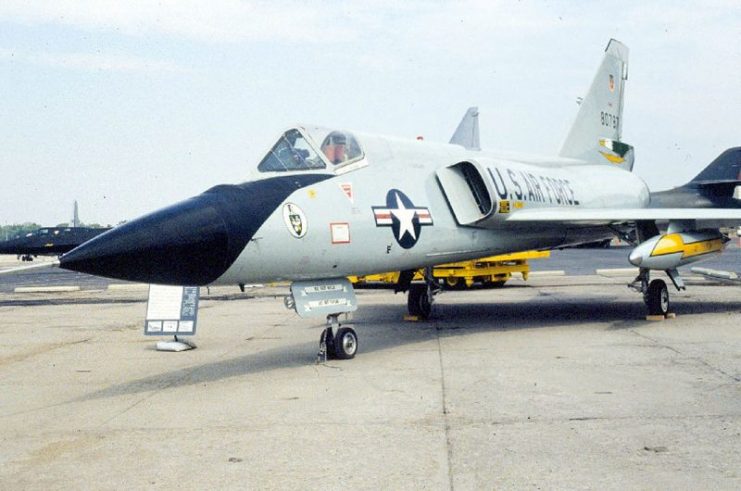
The F-106’s jet engine was still idling and producing enough thrust to push the grounded aircraft slowly but ceaselessly through the snow. Curious onlookers were warned to keep back, and the sheriff of Big Sandy – the town near which the F-106 landed – contacted McClellan Air Force Base to ask what to do about the still-running interceptor.
While they began to coach him on the procedure to shut the jet engine down, they quickly decided that it would be too risky, so they advised him to keep people clear and simply let the F-106 run out of fuel. This happened around 45 minutes after it had touched down, during which time it had moved itself a few hundred yards across the field.
When the recovery crew from the Air Force Base arrived on the scene, they were astonished at how little damage the F-106 had taken. One pilot said it was almost fit to be flown back to the base. Nevertheless, its wings were removed and it was transported in a flat rail car back to base.
Read another story from us: The mysterious disappearance of a USAF C-54
After being repaired, F-106 58-0787 was returned to service with the 49th Fighter-Interceptor Squadron, and it was flown again by Faust on a training mission in 1979. This time, however, he landed it normally.
The interceptor was retired in the early ‘80s, and in 1986 it was presented to the National Museum of the US Air Force, where it can currently be seen on display.
